The Women in Network Science (WiNS) seminar is an interdisciplinary seminar hosted at the University of Washington with the aim to promote and showcase research by women and nonbinary researchers in network science.
The seminar is open to everyone. (This includes men as well as researchers and students who are not affiliated with the University of Washington.) Please join the mailing list to receive announcements and zoom links for upcoming seminar talks.
Alice Schwarze convenes this seminar series. Please get in touch if you are interested in presenting in the seminar or if you would like to nominate speakers.
For all scheduled talks, relevant preprints are available on our ZeroDivZero repository. Recordings of past talks can also be found in the ZeroDivZero repository and on Youtube.
There are currently no scheduled WiNS seminar talks. Please check back in March 2022 for updates.
Previous talks
(still available on Youtube!)
Wednesday, March 10, 2021, 11 AM Pacific Time
Sofia Teixeira (Learning Health Luz Saude, Lisbon, Portugal):
Evolution of collective fairness in complex networks through degree-based role assignment
 Bio:
Sofia Teixeira received her PhD in Information Systems and Computer Engineering from Universidade de Lisboa (Portugal). She was a postdoc at Indiana University between 2019 and 2020, and before that she was a junior researcher at IDSS group/INESC-ID since 2010. Currently, she is a Research Scientist at Hospital da Luz Learning Health, Luz Lisboa. She is also the Chair of the advisory board of yrCSS, and a member of the Council of the CSS. Sofia's research interests include modelling and analyzing different complex systems through the development of new algorithms on graphs and the application of network science and machine learning methods. Some fields of interest are Network Neuroscience, Evolutionary Game Theory, Cognitive Science and Computational Epidemiology, among others.
Bio:
Sofia Teixeira received her PhD in Information Systems and Computer Engineering from Universidade de Lisboa (Portugal). She was a postdoc at Indiana University between 2019 and 2020, and before that she was a junior researcher at IDSS group/INESC-ID since 2010. Currently, she is a Research Scientist at Hospital da Luz Learning Health, Luz Lisboa. She is also the Chair of the advisory board of yrCSS, and a member of the Council of the CSS. Sofia's research interests include modelling and analyzing different complex systems through the development of new algorithms on graphs and the application of network science and machine learning methods. Some fields of interest are Network Neuroscience, Evolutionary Game Theory, Cognitive Science and Computational Epidemiology, among others.
Abstract: From social contracts to climate agreements, individuals engage in groups that must collectively reach decisions with varying levels of equality and fairness. These dilemmas also pervade Distributed Artificial Intelligence, in domains such as automated negotiation, conflict resolution or resource allocation. As evidenced by the well-known Ultimatum Game -- where a Proposer has to divide a resource with a Responder -- payoff-maximizing outcomes are frequently at odds with fairness. Eliciting equality in populations of self-regarding agents requires judicious interventions. Here we use knowledge about agents' social networks to implement fairness mechanisms, in the context of Multiplayer Ultimatum Games. We focus on network-based role assignment and show that preferentially attributing the role of Proposer to low-connected nodes increases the fairness levels in a population. We evaluate the effectiveness of low-degree Proposer assignment considering networks with different average connectivity, group sizes, and group voting rules when accepting proposals (e.g. majority or unanimity). We further show that low-degree Proposer assignment is efficient, not only optimizing fairness, but also the average payoff level in the population. Finally, we show that stricter voting rules (i.e., imposing an accepting consensus as a requirement for collectives to accept a proposal) attenuates the unfairness that results from situations where high-degree nodes (hubs) are the natural candidates to play as Proposers. Our results suggest new routes to use role assignment and voting mechanisms to prevent unfair behaviors from spreading on complex networks.
Website: www.andreiasofiateixeira.com
Wednesday, March 3, 2021, 11 AM Pacific Time
Jessica Davis (Northeastern University, USA):
Cryptic transmission of SARS-CoV-2 and the first COVID-19 wave in Europe and the United States
 Bio:
Jessica Davis is a fourth year PhD student in Network Science at Northeastern University in the MOBS Lab. She completed her undergraduate degree in applied mathematics and communication studies at the University of North Carolina at Chapel Hill. Broadly speaking, she is interested in understanding how complex socio-technical systems affect the spread of information, behavior, and infectious diseases. Her current research examines how mechanistic models can be used to provide insight into the emerging dynamics of infectious diseases.
Bio:
Jessica Davis is a fourth year PhD student in Network Science at Northeastern University in the MOBS Lab. She completed her undergraduate degree in applied mathematics and communication studies at the University of North Carolina at Chapel Hill. Broadly speaking, she is interested in understanding how complex socio-technical systems affect the spread of information, behavior, and infectious diseases. Her current research examines how mechanistic models can be used to provide insight into the emerging dynamics of infectious diseases.
Abstract: As an initial response to the emerging SARS-CoV-2 virus, many countries adopted a policy of only testing symptomatic individuals with a travel history linked to China. The narrowness of this criteria resulted in detecting only a small fraction of symptomatic cases, leaving many countries unaware of the local, domestic transmission. We implement a data-driven, stochastic, spatial, and age-structured epidemic model that relies on the global mobility network to provide a statistical analysis of the cryptic transmission phase and the ensuing first wave of the COVID-19 pandemic. We find that wide-spread community transmission was likely occurring in several countries in Europe and states in the US as early as January 2020. Our results indicate that international travel was the key driver of the early introduction of SARS-CoV-2 with possible importation and transmission events as early as December 2019. However, internal importations (within the US and European continent) were critical in the sustained propagation of the virus after many countries implemented travel restrictions in January and February. Analyzing the initial cryptic transmission phase provides insight into the early spreading dynamics of the virus and, in combination with sequencing data from SARS-CoV-2 genomes, can be used to reconstruct the early epidemic history of the COVID-19 pandemic in greater detail. Leveraging the methods used in this analysis can provide a statistical picture to assess the risk of emerging viruses and their variants when data are not available.
Website: https://www.networkscienceinstitute.org/people/jessica-davis
Wednesday, February 24, 2021, 11 AM Pacific Time
Sandra González-Bailón (University of Pennsylvania):
Automated Accounts and the Spread of Information on Social Media
 Bio:
Sandra González-Bailón is an Associate Professor at the Annenberg School for Communication, and affiliated faculty at the Warren Center for Network and Data Sciences. Prior to joining Penn, she was a Research Fellow at the Oxford Internet Institute (2008-2013). She completed her doctoral degree in Nuffield College (link is external) (University of Oxford) and her undergraduate studies at the University of Barcelona. Her research lies at the intersection of network science, data mining, computational tools, and political communication. Her applied research looks at how online networks shape exposure to information, with implications for how we think about political engagement, mobilization dynamics, information diffusion, and news consumption.
Bio:
Sandra González-Bailón is an Associate Professor at the Annenberg School for Communication, and affiliated faculty at the Warren Center for Network and Data Sciences. Prior to joining Penn, she was a Research Fellow at the Oxford Internet Institute (2008-2013). She completed her doctoral degree in Nuffield College (link is external) (University of Oxford) and her undergraduate studies at the University of Barcelona. Her research lies at the intersection of network science, data mining, computational tools, and political communication. Her applied research looks at how online networks shape exposure to information, with implications for how we think about political engagement, mobilization dynamics, information diffusion, and news consumption.
Abstract: Information manipulation is widespread in today's media environment. Online networks have disrupted the gatekeeping role of traditional media by allowing various actors to influence the public agenda; they have also allowed automated accounts (or bots) to blend with human activity in the flow of information. In this talk, I will discuss evidence assessing the impact that bots have on the dissemination of content during contentious political events evolving in real-time on social media. I will focus on events of heightened political tension because they are particularly susceptible to information campaigns designed to mislead or exacerbate conflict. This research employs tools from network science, natural language processing, and machine learning to analyze the diffusion structure, the content of the messages diffused, and the actors behind those messages as the political events unfolded. I will show that verified accounts are significantly more visible than unverified bots in the coverage of the events but also that bots attract more attention than human accounts. The findings highlight that social media and the web are very different news ecosystems in terms of prevalent news sources and that both humans and bots contribute to generate discrepancy in news visibility with their activity. They also highlight the importance of clearly defining the policies that underlie the verification process of social media accounts.
Website: https://dimenet.asc.upenn.edu/
Wednesday, February 17, 2021, 11 AM Pacific Time (not recorded)
Nina Cesare (Boston University, USA):
Understanding Population Health via Digital Data: Foundations, challenges and applications
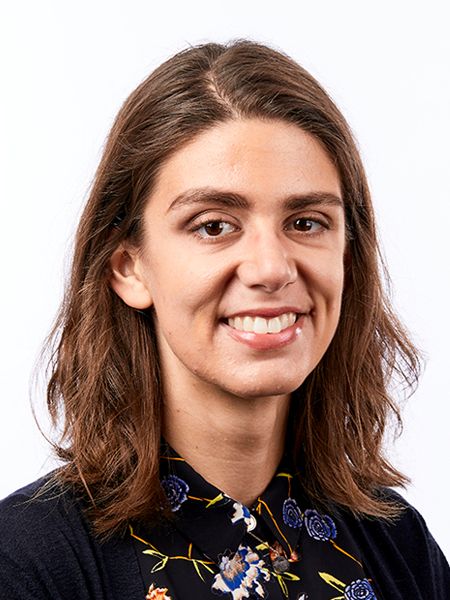 Bio:
Nina Cesare is a postdoctoral associate at Boston University's School of Public Health. received her Ph.D. in sociology from the University of Washington. Her research explores the use of digital data and the spatial and social complexity of social determinants of health. She strives to create work that bridges data science and sociology.
Bio:
Nina Cesare is a postdoctoral associate at Boston University's School of Public Health. received her Ph.D. in sociology from the University of Washington. Her research explores the use of digital data and the spatial and social complexity of social determinants of health. She strives to create work that bridges data science and sociology.
Abstract: The digital traces we leave online offer unprecedented insight into the health-related attitudes and behaviors of a population. Each source offers unique advantages and challenges that the researcher must account for when designing a study. In this talk, I will discuss how my colleagues and I have used Twitter and Google Trends to assess trends pertaining to physical inactivity, pregnancy loss, and COVID-19 misinformation. I will address the challenges of using these and other digital sources, focusing primarily on the limitations of using semi-structured, self-reported information, and on the ethical implications of using open data to monitor collective health.
Website: http://ninacesare.com/
Wednesday, February 10, 2021, 11 AM Pacific Time
Ekaterina Landgren (Cornell University, USA):
When can minority win? Undemocratic outcomes in a model of voter turnout
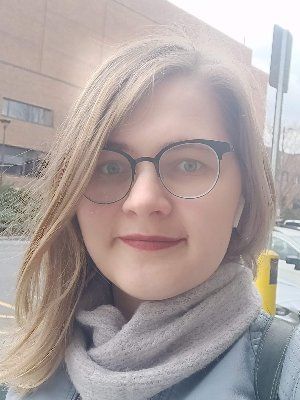 Bio:
Ekaterina (Kath) Landgren is an Applied Mathematics Ph.D. candidate with Steven Strogatz at Cornell University. She received an Sc.B. in Applied Mathematics and an A.B. in Philosophy from Brown University. Her research is in the intersection of applied mathematics and atmospheric sciences. She builds and works with models of varying complexity: from energy balance models to global climate models. She is interested in using dynamical systems to explain the underlying mechanisms of atmosphere dynamics and model social phenomena.
Bio:
Ekaterina (Kath) Landgren is an Applied Mathematics Ph.D. candidate with Steven Strogatz at Cornell University. She received an Sc.B. in Applied Mathematics and an A.B. in Philosophy from Brown University. Her research is in the intersection of applied mathematics and atmospheric sciences. She builds and works with models of varying complexity: from energy balance models to global climate models. She is interested in using dynamical systems to explain the underlying mechanisms of atmosphere dynamics and model social phenomena.
Abstract: Voter models can provide insight into voter behavior and help forecast elections. Many popular voter models are based on opinion dynamics. However, patterns in voter turnout can affect election outcomes and distort representation of opinions. Furthermore, voter turnout varies highly depending on type, place, and size of elections. In our agent-based model, we take voter turnout into account by making a distinction between voter opinion and the act of voting. We assign an opinion to each node, which represents a potential voter. The potential voters make a decision to vote or to abstain based on their local network information. We explore a variety of network structures and node distributions and find that certain structures and parameter regimes favor undemocratic outcomes where a minority faction wins, especially when the local opinion distribution is not representative of the global opinion. We generalize the agent-based model to a community-based turnout model in order to gain insight into the network structure of US precinct dual graphs.
Website: https://www.kathlandgren.com/
Wednesday, February 3, 2021, 11 AM Pacific Time
Vandana Ravindran (University of Oslo Institute of Basic Medical Sciences, Norway):
Network controlability in biological systems
 Bio:
Vandana Ravindran is a Scientia fellow at the Institute of Basic Medical Sciences. She received her Ph. D. from the Dhirubhai Ambani Institute of Information and Communication Technology, India and has since been a Royal Society-SERB Newton International fellow at the MRC-University of Glasgow Centre for Virus Research (2018-2020). Prior to her PhD, she worked as a research fellow at the Thrombosis Research Institute, India.
Bio:
Vandana Ravindran is a Scientia fellow at the Institute of Basic Medical Sciences. She received her Ph. D. from the Dhirubhai Ambani Institute of Information and Communication Technology, India and has since been a Royal Society-SERB Newton International fellow at the MRC-University of Glasgow Centre for Virus Research (2018-2020). Prior to her PhD, she worked as a research fellow at the Thrombosis Research Institute, India.
Abstract:
Virus replication is entirely dependent on the host system they infect. This involves a high degree of virus-host specificity at the molecular level. For example, recognition of receptors on specific cell types by virus molecules is key to cell-entry, and interacting with host molecules is necessary to exploit intra-cellular 'machinery' to replicate. To achieve this, virus molecules must interact with many host molecules through a complex network of mostly protein-protein interactions (PPIs). In turn the host response to infection involves anti-viral factors, and subsequent virus response to host response, leading to a complex entanglement of virus and host interactions. In recent years control theory has been applied to biological systems with the aim of identifying the minimum set of molecular interactions that can drive the network to a required state. However, in an intra-cellular network it is unclear how control can be achieved in practice.
Viral infection is unique as a system for the study of the applicability of controllability to a natural system, as the virus makes many interactions with the host system and is explicitly exploiting host functions. To address this limitation we use viral infection, specifically human immunodeficiency virus type 1 (HIV-1), as a paradigm to model control of an infected cell. Our network controllability analysis demonstrates how a virus efficiently brings the dynamically organised host system into its control by mostly targeting existing critical control nodes, requiring fewer nodes than in the uninfected network. The lower number of control nodes is presumably to optimise exploitation of specific sub-systems needed for virus replication and/or involved in the host response to infection.
Website: https://www.med.uio.no/imb/english/people/aca/vandanar/
Wednesday, January 27, 2021, 11 AM Pacific Time
Allison Morgan (University of Colorado, Boulder, USA):
The Unequal Impact of Parenthood in Academia
 Bio:
Allison Morgan is a computer science PhD student and NSF Graduate Research Fellow at the University of Colorado, Boulder.
She received a B.A. in physics from Reed College. As a PhD student at UC Boulder, she is a member of Aaron Clauset's research group.
Her interests lie within computational social science; more specifically, she measures the structural factors that drive a lack of diversity in science and highlight their consequences.
Her research has been published in EPJ Data Science and PNAS, and covered by outlets such as the Washington Post and Scientific American.
Bio:
Allison Morgan is a computer science PhD student and NSF Graduate Research Fellow at the University of Colorado, Boulder.
She received a B.A. in physics from Reed College. As a PhD student at UC Boulder, she is a member of Aaron Clauset's research group.
Her interests lie within computational social science; more specifically, she measures the structural factors that drive a lack of diversity in science and highlight their consequences.
Her research has been published in EPJ Data Science and PNAS, and covered by outlets such as the Washington Post and Scientific American.
Abstract: Across academia, men and women tend to publish at unequal rates. Existing explanations include the potentially unequal impact of parenthood on scholarship, but a lack of appropriate data has prevented its clear assessment. Here, we quantify the impact of parenthood on scholarship using an extensive survey of the timing of parenthood events, longitudinal publication data, and perceptions of research expectations among 3064 tenure-track faculty at 450 PhD-granting computer science, history, and business departments across the U.S. and Canada, along with data on institution specific parental leave policies. Parenthood explains the gender productivity gap by lowering the average short-term productivity of mothers, even as parents tend to be slightly more productive on average than non-parents. However, the size of the productivity penalty for mothers appears to have shrunk over time. Women report that paid parental leave and adequate childcare are important factors in their recruitment and retention, despite nearly 40% of institutions offering no paid parental leave. These results have broad implications for efforts to improve the inclusiveness of scholarship.
Website: https://allisonmorgan.github.io/
Wednesday, January 13, 2021, 11 AM Pacific Time
Kimberly Glass (Harvard Medical School, USA):
Multi-Omic Data Integration In Gene Regulatory Networks
 Bio:
Kimberly Glass is an assistant professor at Brigham and Women's Hospital, a teaching hospital of Harvard Medical School.
Her research focuses on integrating multiple sources of omics data and on understanding how biological mechanisms and contexts affect
structure of gene regulatory networks. Her research group's primary interests are in developing methods and building computational tools that merge
an appreciation of network analysis, biological function and translational impact.
Bio:
Kimberly Glass is an assistant professor at Brigham and Women's Hospital, a teaching hospital of Harvard Medical School.
Her research focuses on integrating multiple sources of omics data and on understanding how biological mechanisms and contexts affect
structure of gene regulatory networks. Her research group's primary interests are in developing methods and building computational tools that merge
an appreciation of network analysis, biological function and translational impact.
Abstract: Rapidly evolving Omics technologies are providing unprecedented amounts of data that can yield new insights into biological processes, allowing us to develop a more unified understanding of the development and progression of complex disease. In most cases a single gene or pathway cannot fully characterize a disease. Rather, disease-related changes often involve simultaneous alterations to the genome, epigenome, transcriptome, and proteome of the cell. Networks provide a powerful approach for identifying disease-related biological mechanisms by establishing a framework for integrating multiple types of Omics information. Importantly, complex shifts in the regulatory networks can provide important insights into the underlying mechanisms influencing disease state. Our group has developed a suite of methods that support: (1) effective integration of multi-omic data to reconstruct gene regulatory networks; (2) analysis of these networks to identify changes in disease state; and (3) modeling of context-specific networks in order to link regulatory alterations with specific phenotypes. In this talk, I will review how we have used these approaches to discover new features of disease and to understand the complex regulatory processes at work across individuals.
Website: https://sites.google.com/a/channing.harvard.edu/kimberlyglass/
Wednesday, December 9, 2020, 11 AM Pacific Time
Dina Mistry (Institute for Disease Modeling, The Bill and Melinda Gates Foundation, USA):
Network Epidemiology and COVID-19
 Bio:
Dina Mistry, PhD, is a network scientist currently working in the Epidemiology team at the Institute for Disease Modeling, a part of the Bill & Melinda Gates Foundation. She earned her Ph.D. under the supervision of Professor Alessandro Vespignani at the Network Science Institute at Northeastern University. Her research focuses on characterizing and modeling the heterogeneity of social contact networks and mobility networks.
Bio:
Dina Mistry, PhD, is a network scientist currently working in the Epidemiology team at the Institute for Disease Modeling, a part of the Bill & Melinda Gates Foundation. She earned her Ph.D. under the supervision of Professor Alessandro Vespignani at the Network Science Institute at Northeastern University. Her research focuses on characterizing and modeling the heterogeneity of social contact networks and mobility networks.
Abstract: Epidemiological models have long been used to gain insight into the dynamics of how infectious diseases spread within populations. Of these, mechanistic models are becoming important tools to retrospectively identify factors contributing to disease transmission, nowcast ongoing outbreaks, forecast epidemics, and highlight the potential of intervention strategies. As the complexity of modeling goals increases, often the choice of appropriate models changes and more complex modeling approaches are needed. In some respect, the use of models to address public health questions is only as powerful as the data they are built upon. Complex models aimed at evaluating interventions designed to suppress transmission by reducing interaction call for increased realism and accuracy of the descriptions in how people interact in their everyday lives. This requires both data and an understanding of interaction patterns relevant to disease transmission. Network epidemiology provides the right framework for us to integrate rich, detailed data on these patterns and ask complex questions about disease transmission, behaviour, and the impact of individual based interventions applied in diverse and heterogeneous populations. In this talk, I'll introduce the kinds of modeling network epidemiology is best poised to address and discuss the ongoing research my team has been doing to apply network modeling to real world questions about reopening strategies during the current COVID-19 pandemic.
Paper(s): "Controlling COVID-10 via test-trace-quarantine"
Website: https://dinacmistry.github.io/
Wednesday, November 25, 2020, 11 AM Pacific Time
Nitika Sharma (University of California Los Angeles):
A reproductive heir has a central position in multilayer social networks of primitively eusocial paper wasps
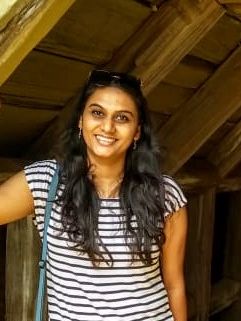 Bio:
Nitika Sharma, PhD, is a postdoctoral scholar at UCLA who has started working on multilayer networks of tropical paper wasps and vultures recently. She did her PhD from the Indian Institute of Science in Bangalore, India on the spatial organization of tropical paper wasps within their nests.
Bio:
Nitika Sharma, PhD, is a postdoctoral scholar at UCLA who has started working on multilayer networks of tropical paper wasps and vultures recently. She did her PhD from the Indian Institute of Science in Bangalore, India on the spatial organization of tropical paper wasps within their nests.
Abstract: Reproduction provides direct fitness benefits, therefore, it is important to determine why in some societies certain individuals have disproportionate access to reproductive opportunities. In many social systems, reproductive hierarchy is determined by aggression, age, genetics, or physiology. The social interactions that underly reproductive hierarchies can occur in multiple situations, yet they are rarely studied in unison. The reproductive heir in the social wasp, Ropalidia marginata, remains cryptic until the queen dies or disappears. To determine if a reproductive heir can be identified through her behavior, we examined four types of social interactions: aggression, spatial overlap, and exchange of solid or liquid food. We asked if accounting for all four social situations in a multilayer network provides more information about the structure of the society than examining each situation on its own, or in an aggregate network that does not distinguish between social situations. We found that the reproductive heir had the most social interactions in the multilayer network, but not in each of the social situations when considered separately, or when all situations were lumped together. Our work demonstrates that multilayer networks can uncover new insights on social organization by explicitly considering the links between multiple situations of social interactions.
Wednesday, November 18, 2020, 11 AM Pacific Time
Mari Kawakatsu (Princeton University, USA):
Emergence of hierarchy in networked endorsement dynamics
 Bio:
Mari Kawakatsu is a PhD candidate in the Program in Applied and Computational Mathematics at Princeton University. In her research as a mathematical biologist, she uses tools from evolutionary game theory, dynamical systems, and network science to explore mathematical and computational models of collective and emergent behavior in social systems.
Bio:
Mari Kawakatsu is a PhD candidate in the Program in Applied and Computational Mathematics at Princeton University. In her research as a mathematical biologist, she uses tools from evolutionary game theory, dynamical systems, and network science to explore mathematical and computational models of collective and emergent behavior in social systems.
Abstract: Many social and biological systems are characterized by enduring hierarchies, including those organized around prestige in academia, dominance in animal groups, and desirability in online dating. Despite their ubiquity, the general mechanisms that explain the creation and endurance of such hierarchies are not well understood. We introduce a generative model for the dynamics of hierarchies using time-varying networks in which new links are formed based on the preferences of nodes in the current network and old links are forgotten over time. The model produces a range of hierarchical structures, ranging from egalitarianism to bistable hierarchies, and we derive critical points that separate these regimes in the limit of long system memory. Importantly, our model supports statistical inference, allowing for a principled comparison of generative mechanisms using data. We apply the model to study hierarchical structures in empirical data on hiring patterns among mathematicians, dominance relations among parakeets, and friendships among members of a fraternity, observing several persistent patterns as well as interpretable differences in the generative mechanisms favored by each. Our work contributes to the growing literature on statistically grounded models of time-varying networks.
Paper(s):
"Emergence of Hierarchy in Networked Endorsement Dynamics"
Website:
www.marikawakatsu.com
Wednesday, November 11, 2020, 11 AM Pacific Time
Leonie Neuhäuser (RWTH Aachen, Germany):
Consensus dynamics on hypergraphs: No higher-order effects without nonlinearity!
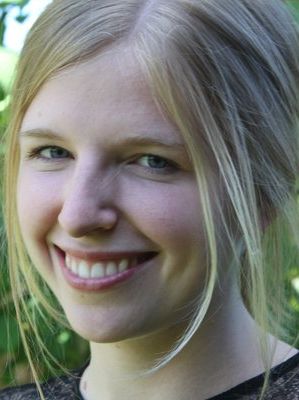 Bio:
Leonie Neuhäuser is a 1st year PhD student at RWTH Aachen. She holds a Master of Science in Mathematical Modelling and Scientific Computing from the University of Oxford. Previously, she studied mathematics and psychology in Germany at Universität Bonn and in Mexico at Benemérita Universidad Autónoma de Puebla.
Bio:
Leonie Neuhäuser is a 1st year PhD student at RWTH Aachen. She holds a Master of Science in Mathematical Modelling and Scientific Computing from the University of Oxford. Previously, she studied mathematics and psychology in Germany at Universität Bonn and in Mexico at Benemérita Universidad Autónoma de Puebla.
Abstract: Multibody interactions can reveal higher-order dynamical effects that are not captured by traditional two-body network models. In this work, we derive and analyze models for consensus dynamics on hypergraphs, where nodes interact in groups rather than in pairs. Our work reveals that multibody dynamical effects that go beyond rescaled pairwise interactions can appear only if the interaction function is nonlinear, regardless of the underlying multibody structure. As a practical application, we introduce a specific nonlinear function to model three-body consensus, which incorporates reinforcing group effects such as peer pressure. Unlike consensus processes on networks, we find that the resulting dynamics can cause shifts away from the average system state. The nature of these shifts depends on a complex interplay between the distribution of the initial states, the underlying structure, and the form of the interaction function. By considering modular hypergraphs, we discover state-dependent, asymmetric dynamics between polarized clusters where multibody interactions make one cluster dominate the other.
Paper(s):
"Multibody interactions and nonlinear consensus dynamics on networked systems"
Wednesday, November 4, 2020, 11 AM Pacific Time
Maria C. Ramos (Duke University, USA):
Identity Structures, Values, and Master Identities
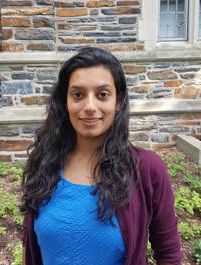 Bio:
Maria Ramos, PhD, received her Ph.D. in Sociology at Duke University in Spring 2020. She is currently a Visiting Research Fellow at Duke Network Analysis Center. Maria's research combines network analysis and computational methods to investigate mental models of beliefs about politics and the self.
Bio:
Maria Ramos, PhD, received her Ph.D. in Sociology at Duke University in Spring 2020. She is currently a Visiting Research Fellow at Duke Network Analysis Center. Maria's research combines network analysis and computational methods to investigate mental models of beliefs about politics and the self.
Abstract: A long-standing sociological puzzle is how multiple identities, categories of people individuals use to describe themselves and others, are organized within the self. Sociologists have conceptualized identities as organized around central elements that shape the selection and enactment of multiple other identities. While this organization has been implicit or explicit in the literature, little work has directly examined this pattern of organization. In this article, I map identity structures using network analysis techniques. I also investigate the claim that values, abstract ideals that guide action, bridge identities from different domains to give the self a sense of cohesion. I use data from the European Social Survey 2002 to construct networks where nodes are values, identities, and sociodemographic characteristics. Network ties are given by measures of statistical association between nodes. Results suggest identities are organized around content domains (e.g., family, religion, and occupation). Country of citizenship emerges as the most central node in the between-nations network. Both across and within countries, a few nodes (e.g., age and religious denomination) act as hubs, connecting distinct domain regions (e.g., family, religion, occupation). Meanwhile, values occupy a peripheral position in most within-country networks.
Website: www.mariacramos.com
Wednesday, October 28, 2020, 11 AM Pacific Time
Sarah West (University of Minnesota, USA):
Wide-Field Calcium Imaging of Dynamic Cortical Networks During Locomotion
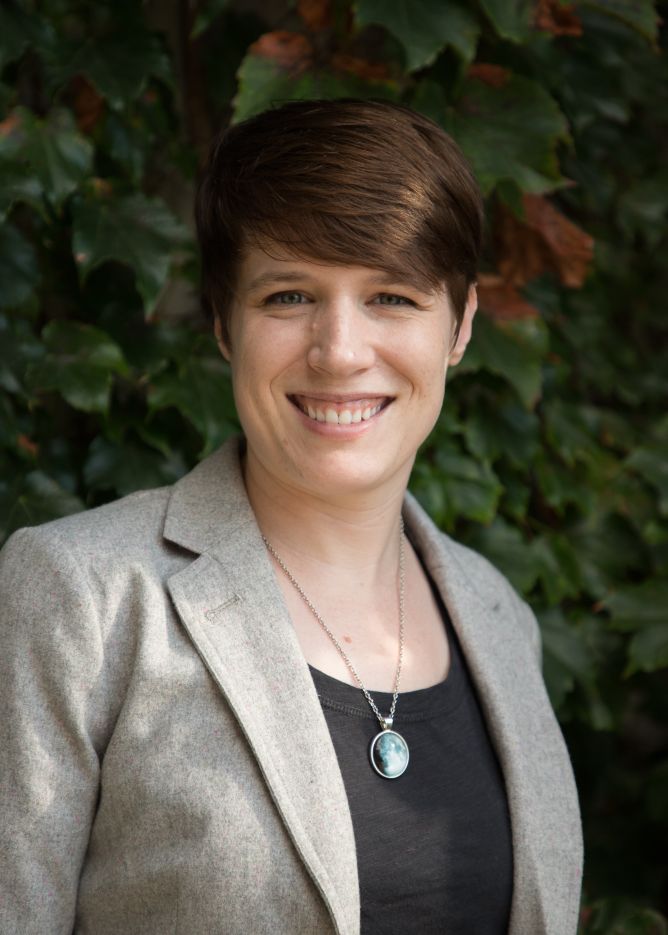 Bio:
Sarah is a 4th year PhD candidate in the Graduate Program in Neuroscience at the University of Minnesota. She was first inducted in the network neuroscience world when she attended the 2019 Complex Network Winter Workshop in Quebec City. Outside of science, she enjoys playing Dungeons and Dragons with friends and training her two dogs in agility, dogsledding, and scent detection.
Bio:
Sarah is a 4th year PhD candidate in the Graduate Program in Neuroscience at the University of Minnesota. She was first inducted in the network neuroscience world when she attended the 2019 Complex Network Winter Workshop in Quebec City. Outside of science, she enjoys playing Dungeons and Dragons with friends and training her two dogs in agility, dogsledding, and scent detection.
Abstract: Behavior results in widespread activation of the cerebral cortex. To fully understanding the cerebral cortex's role in behavior therefore requires a mesoscopic level description of the cortical regions engaged and their functional interactions. Mesoscopic imaging of Ca2+ fluorescence through transparent polymer skulls implanted on transgenic Thy1-GCaMP6f mice reveals widespread activation of the cerebral cortex during locomotion, including not just primary motor and somatosensory regions but also premotor, auditory, retrosplenial, and visual cortices. To understand these patterns of activation, we used spatial Independent Component Analysis (sICA) that segmented the dorsal cortex of individual mice into 20-22 Independent Components (ICs). The resulting ICs are highly consistent across imaging sessions and animals. Using the time series of Ca2+ fluorescence in each IC, we examined the changes in functional connectivity from rest to locomotion. Compared to rest, functional connectivity increases prior to and at the onset of locomotion. During continued walking, a global decrease in functional connectivity develops compared to rest that uncovers a distinct, sparser network in which ICs in secondary motor areas increase their correlations with more posterior ICs in somatosensory, motor, visual, and retrosplenial cortices. Eigenvector centrality analysis demonstrates that ICs located in premotor areas increase their influence on the network during locomotion while ICs in other regions, including somatosensory and primary motor, decrease in importance. We observed sequential changes in functional connectivity across transitions between rest and locomotion, with premotor areas playing an important role in coordination of computations across cortical brain regions.
Paper(s):
"Wide-Field Calcium Imaging of Dynamic Cortical Networks During Locomotion"
Wednesday, October 21, 2020, 11 AM Pacific Time
Diana Elisa García Cortés (National Institute of Genomic Medicine, Mexico):
Loss of long range co-expression in cancer
 Bio:
Diana García Cortés is a PhD student in Biomedical sciences at the Theoretical Oncology lab at the National Institute of Genomic Medicine in Mexico. My main research focus are co-expression cancer networks and she aims to promote participation of mexican students, especially women, into network science.
Bio:
Diana García Cortés is a PhD student in Biomedical sciences at the Theoretical Oncology lab at the National Institute of Genomic Medicine in Mexico. My main research focus are co-expression cancer networks and she aims to promote participation of mexican students, especially women, into network science.
Abstract: In any type of cancer, healthy cells traverse through a transition where they acquire a set of traits that promote tumorigenesis. During this transition there is an accumulation of genomic alterations that disrupt transcriptional regulatory mechanisms, modify gene expression and alter key cellular processes. We have studied gene co-expression profiles and gene co-expression networks from RNA-seq samples from TCGA (4237 samples from colon, lung, kidney, thyroid, and uterus cancer and 609 healthy samples from the same tissues). In cancer, there is a loss of long-range co-expression, however, each manifestation displays particularities. Cancer co-expression net-works present an imbalance in the proportion of intra- and inter-chromosomal interactions, meaning that the majority of high co-expression interactions connect gene-pairs in the same chromosome. Those features are not present in the healthy phenotype. The analysis was also performed for breast cancer molecular subtypes. This locally biased co-expression in cancer cells was not previously reported. To determine its importance and its relationship with the traits that promote tumorigenesis is a matter of our current research.
Paper(s):
"Gene Co-expression Is Distance-Dependent in Breast Cancer"
"Eight years of homicide evolution in Monterrey, Mexico: a network approach"
Wednesday, October 14, 2020, 11 AM Pacific Time
Sara Dell Williams (Mote Marine Laboratory, USA):
Resistance and resilience of coral-algal symbiosis networks
 Bio:
Sara D. Williams, PhD in Ecology, Evolution, and Marine Biology from Northeastern University, uses network science and modeling combined with fieldwork and physiological experiments to attack problems facing coral reefs from multiple angles. She studies the connections among polyps in a coral colony, the associations of coral species and their symbiotic algae and microbiome, and the spread of coral diseases - all under the lens of global climate change. Williams is currently a Postdoctoral researcher in the Coral Health and Disease lab at Mote Marine Laboratory in Sarasota, FL.
Bio:
Sara D. Williams, PhD in Ecology, Evolution, and Marine Biology from Northeastern University, uses network science and modeling combined with fieldwork and physiological experiments to attack problems facing coral reefs from multiple angles. She studies the connections among polyps in a coral colony, the associations of coral species and their symbiotic algae and microbiome, and the spread of coral diseases - all under the lens of global climate change. Williams is currently a Postdoctoral researcher in the Coral Health and Disease lab at Mote Marine Laboratory in Sarasota, FL.
Abstract: As coral reefs struggle to persist under a multitude of threats, understanding the resistance and resilience of these complex systems is a central goal of coral reef biology and ecology. Different coral species associate with different species of symbiotic algae (Symbiodiniaceae), creating a complex network of symbiotic associations on a reef. This symbiotic relationship is vulnerable to increasing temperatures. Coral bleaching is the breakdown of the association between the coral host and its endosymbiotic algae in response to stressful temperatures. We analyzed a global network of coral-symbiont associations for resistance to temperature stress and robustness to various perturbations. Our novel bleaching model determined resistance of the networks to increasing temperature by removing links when the environmental temperature surpassed their weight, a temperature threshold for individual host-symbiont pairs based on known physiological responses. Ecological robustness, defined by how much perturbation is needed to decrease the number of nodes by 50%, was determined for multiple removal models that considered traits of the hosts, symbionts, and their associations. We show that the global network of associations between corals and Symbiodiniaceae and its distribution of thermal tolerances are non-random, and the evolution of this architecture has led to higher sensitivity to environmental perturbations. By limiting our spatial scale and expanding our temporal scale, we can start to answer questions about reef resilience. To do this, I repetitively monitored and sampled a coral-Symbiodiniaceae network in Bocas del Toro, Panama from January 2017 to January 2018, during which the reef experienced two high-temperature bleaching events. We explored how Symbiodiniaceae communities varied across host species, depth, and time. Temporal networks of the symbiotic associations were used to assess differences in association patterns that led to structural and/or functional resilience to repeat heat stress events. I define structural resilience as a system's ability to either resist changing the structure of associations or return to the initial structure after a disturbance. Functional resilience is a system's ability to recover in relation to its health and function, but it may also undergo structural changes during that recovery. Structures of Symbiodiniaceae co-occurrence networks and coral-symbiont networks varied through time indicating that on a reef scale, the coral-symbiont associations responded to changing environmental conditions.
Paper(s):
"Resistance and robustness of the global coral–symbiont network"
Website:
"https://saradellwilliams.wordpress.com"
Wednesday, October 7, 2020, 11 AM Pacific Time
Heather Zinn Brooks (Harvey Mudd College, USA):
Bounded-confidence models for media impact on online social networks
 Bio:
Heather Zinn Brooks, PhD, Assistant Professor of Mathematics, specializes in mathematical modeling of complex systems. Brooks earned both her Bachelor's degree and Ph.D. in Mathematics from the University of Utah. Before joining the faculty at Harvey Mudd, she held a CAM postdoctoral position in the Mathematics department at UCLA. She strives to create and communicate mathematics in a way that is exciting, relevant, and inclusive.
Bio:
Heather Zinn Brooks, PhD, Assistant Professor of Mathematics, specializes in mathematical modeling of complex systems. Brooks earned both her Bachelor's degree and Ph.D. in Mathematics from the University of Utah. Before joining the faculty at Harvey Mudd, she held a CAM postdoctoral position in the Mathematics department at UCLA. She strives to create and communicate mathematics in a way that is exciting, relevant, and inclusive.
Abstract: Online social media networks have become extremely influential sources of news and information. Given the large audience and the ease of sharing content online, the content that spreads on online social networks can have important consequences on public opinion, policy, and voting. To better understand the online content spread, mathematical modeling of opinion dynamics is becoming an increasingly popular field of study. In this talk, I will introduce you to a special class of models of opinion dynamics on networks called bounded-confidence models. I will then discuss some of the applications and theory that my collaborators and I have been developing with these models, including the impact of media, opinion dissemination, mean-field dynamics, and extensions to hypergraphs and multilayer networks. This talk will also include some unsolved questions for future work.
| Date | Speaker | Format | Title |
| Sarah Shugars | Seminar | The Structure of Reasoning: Measuring Justification and Preferences in Text | |
| Jess Enright | Journal club | Social fluidity mobilizes contagion in human and animal populations | |
| Fakhteh Ghanbarnejad | Seminar | Impact of temporal correlations on high risk outbreaks | |
| Stefani Crabtree | Seminar | Toward a Science of ArchaeoEcology: Placing Humans into Food Webs | |
| Brooke Foucault Welles | Seminar | #HashtagActivism: Networks of Race and Gender Justice | |
| Vandana R. Venkateswaran | TBD | CANCELLED | |
| Onerva Korhonen | Seminar | The quest for consistency: How to not construct functional brain networks? |
Last updated on January 16, 2022